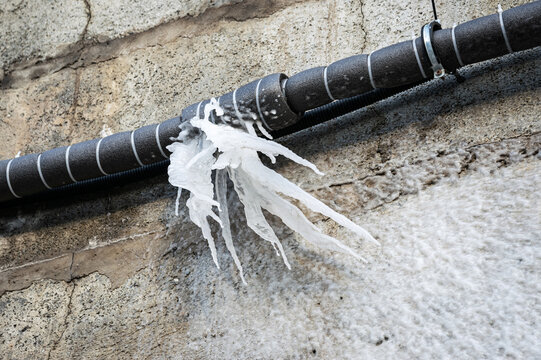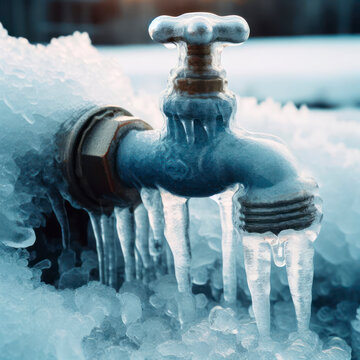Avoiding Frozen Pipes in Winter: Professional Advice
Avoiding Frozen Pipes in Winter: Professional Advice
Blog Article
The content down the page involving How to Prevent Your Pipes From Freezing is immensely engaging. You should see for yourself.

Winter can wreak havoc on your plumbing, especially by freezing pipelines. Here's how to avoid it from taking place and what to do if it does.
Intro
As temperatures decrease, the threat of icy pipelines increases, potentially resulting in costly repair work and water damage. Comprehending exactly how to avoid icy pipelines is critical for home owners in cool environments.
Comprehending Frozen Pipes
What causes pipelines to freeze?
Pipelines ice up when subjected to temperatures listed below 32 ° F (0 ° C) for prolonged periods. As water inside the pipes ices up, it broadens, putting pressure on the pipeline walls and potentially creating them to burst.
Dangers and problems
Icy pipes can cause water supply interruptions, building damages, and pricey repairs. Burst pipes can flood homes and trigger considerable architectural damages.
Signs of Frozen Pipeline
Determining frozen pipes early can stop them from breaking.
Just how to identify icy pipelines
Search for reduced water flow from taps, unusual odors or sounds from pipes, and visible frost on exposed pipelines.
Prevention Tips
Protecting at risk pipes
Cover pipes in insulation sleeves or make use of heat tape to shield them from freezing temperature levels. Focus on pipes in unheated or external locations of the home.
Heating methods
Maintain indoor rooms effectively warmed, particularly areas with pipes. Open up cupboard doors to permit cozy air to circulate around pipelines under sinks.
Securing Exterior Pipes
Garden hoses and outdoor faucets
Separate and drain pipes yard pipes before winter season. Install frost-proof spigots or cover outside faucets with shielded caps.
What to Do If Your Pipelines Freeze
Immediate actions to take
If you suspect icy pipelines, keep taps open up to soothe stress as the ice melts. Make use of a hairdryer or towels soaked in hot water to thaw pipelines slowly.
Long-Term Solutions
Architectural modifications
Take into consideration rerouting pipes away from exterior walls or unheated areas. Add extra insulation to attics, basements, and crawl spaces.
Upgrading insulation
Invest in top quality insulation for pipes, attic rooms, and wall surfaces. Appropriate insulation assists maintain consistent temperatures and minimizes the threat of frozen pipelines.
Conclusion
Protecting against icy pipelines requires positive procedures and fast responses. By comprehending the causes, indications, and safety nets, home owners can shield their pipes throughout winter.
5 Ways to Prevent Frozen Pipes
Drain Outdoor Faucets and Disconnect Hoses
First, close the shut-off valve that controls the flow of water in the pipe to your outdoor faucet. Then, head outside to disconnect and drain your hose and open the outdoor faucet to allow the water to completely drain out of the line. Turn off the faucet when done. Finally, head back to the shut-off valve and drain the remaining water inside the pipe into a bucket or container. Additionally, if you have a home irrigation system, you should consider hiring an expert to clear the system of water each year.
Insulate Pipes
One of the best and most cost-effective methods for preventing frozen water pipes is to wrap your pipes with insulation. This is especially important for areas in your home that aren’t exposed to heat, such as an attic. We suggest using foam sleeves, which can typically be found at your local hardware store.
Keep Heat Running at 65
Your pipes are located inside your walls, and the temperature there is much colder than the rest of the house. To prevent your pipes from freezing, The Insurance Information Institute suggests that you keep your home heated to at least 65 degrees, even when traveling. You may want to invest in smart devices that can keep an eye on the temperature in your home while you’re away.
Leave Water Dripping
Moving water — even a small trickle — can prevent ice from forming inside your pipes. When freezing temps are imminent, start a drip of water from all faucets that serve exposed pipes. Leaving a few faucets running will also help relieve pressure inside the pipes and help prevent a rupture if the water inside freezes.
Open Cupboard Doors
Warm your kitchen and bathroom pipes by opening cupboards and vanities. You should also leave your interior doors ajar to help warm air circulate evenly throughout your home.

I'm very fascinated with How To Avoid Freezing Pipes and I am hoping you appreciated the blog posting. For those who liked our blog entry please remember to share it. Thanks a lot for taking the time to read it.
Book Appointment Report this page